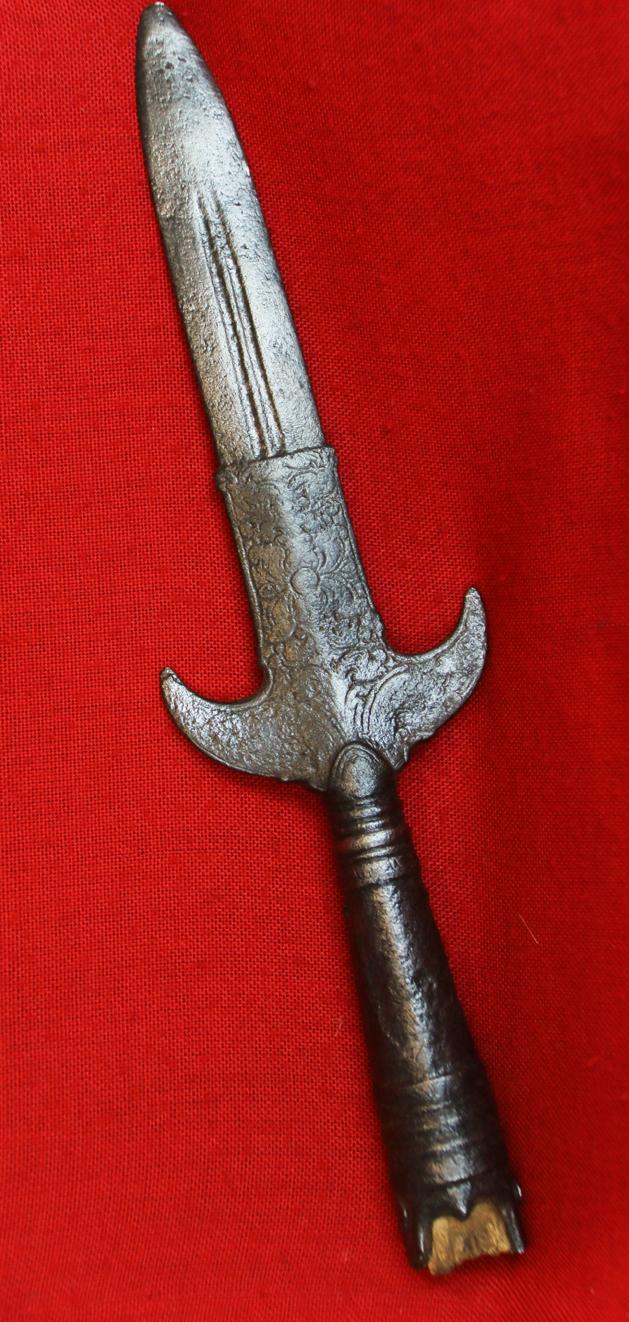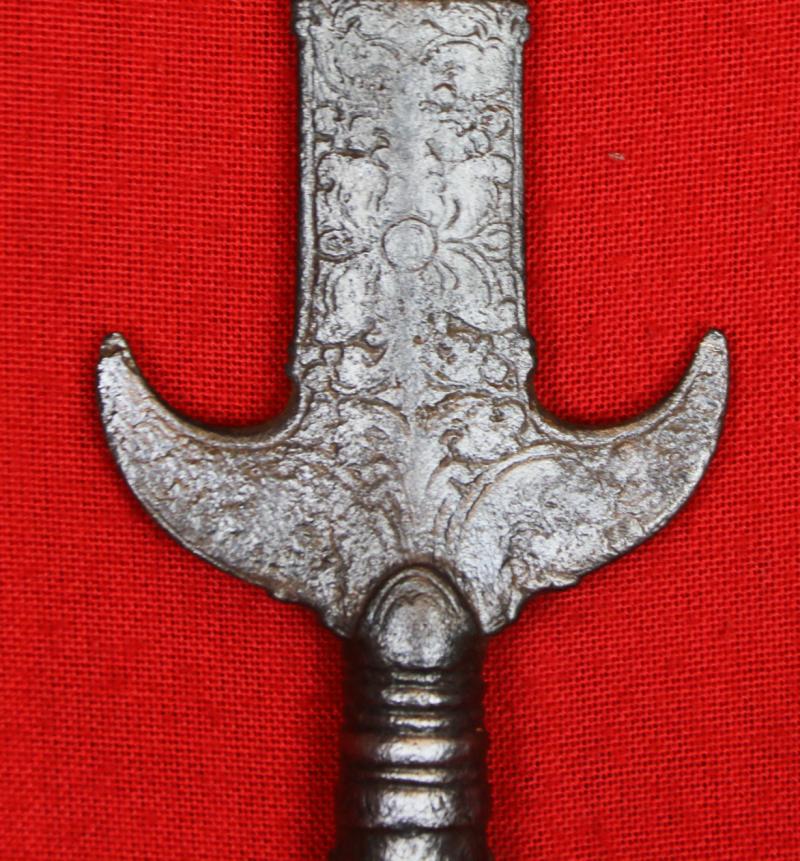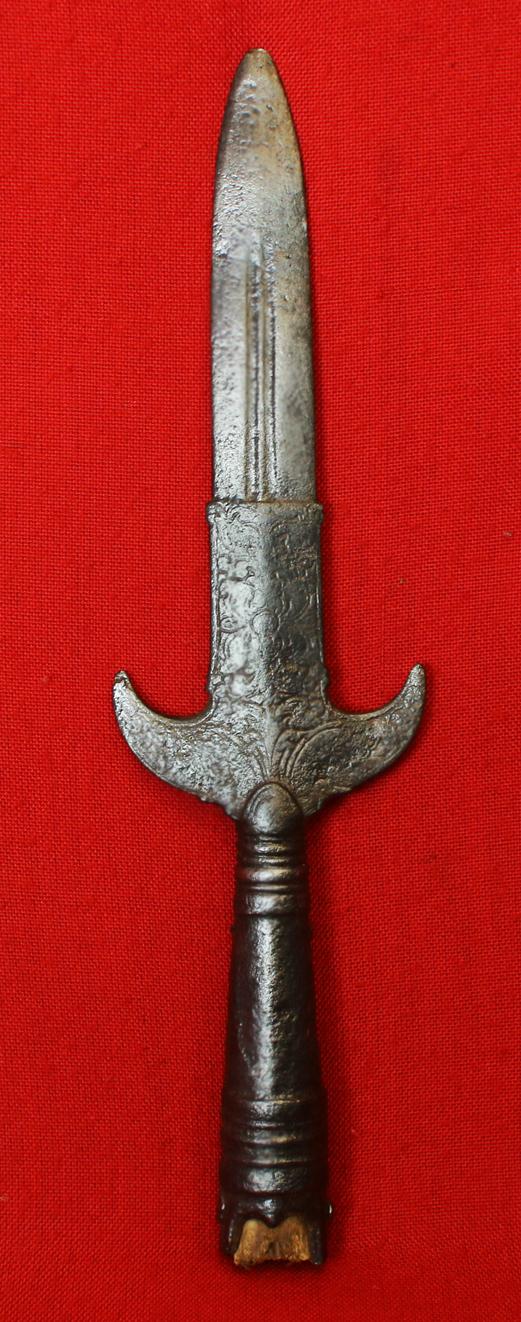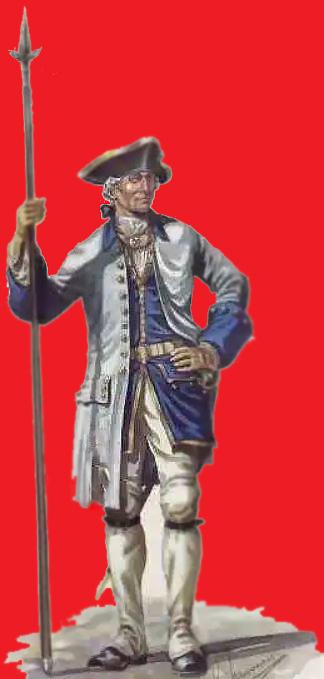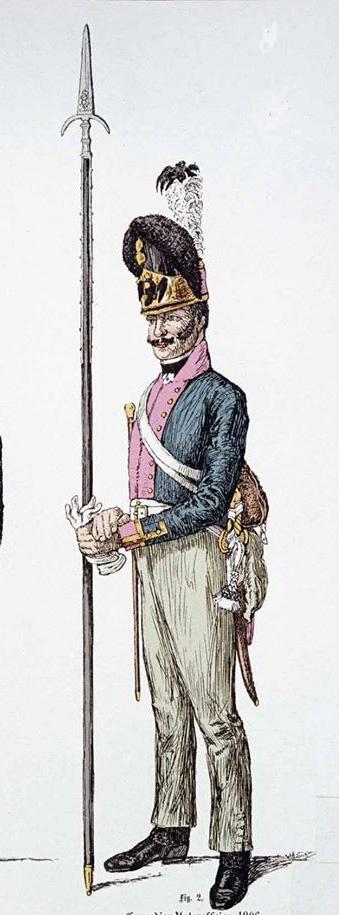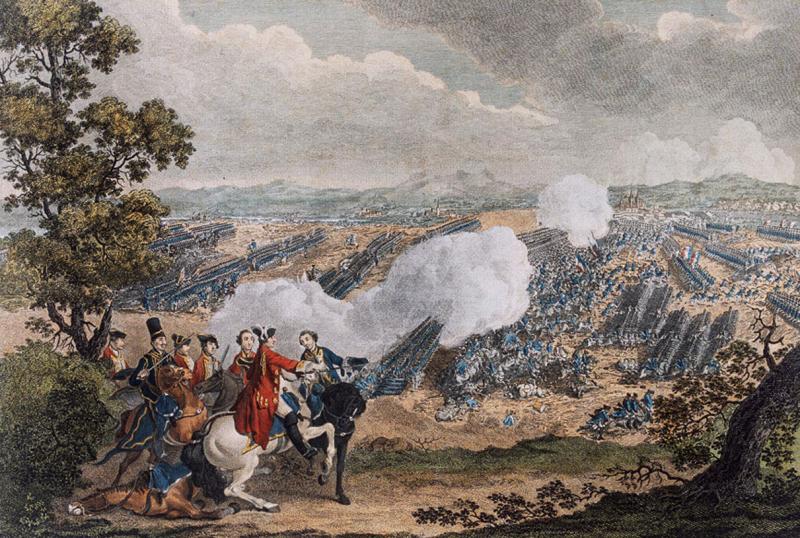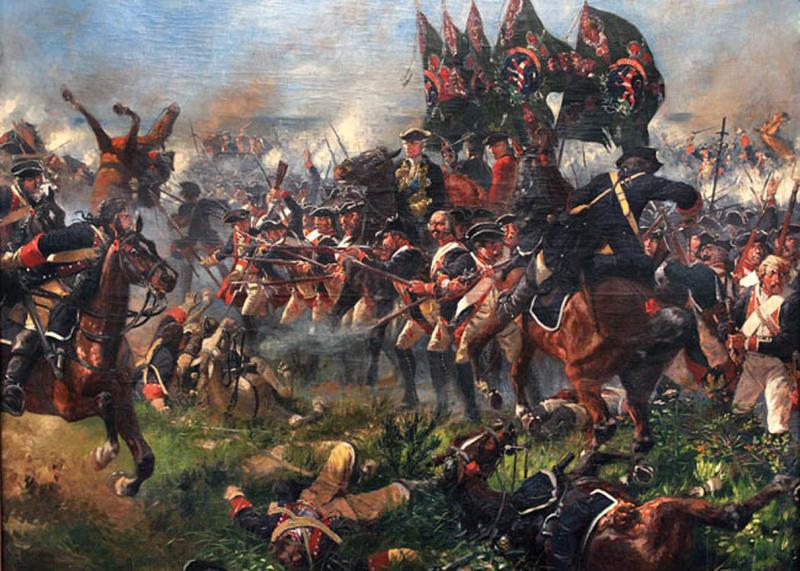A Superb, French, Superior Officer's Spontoon From The Battle of Minden, August 1st 1759 One Of The Great Victorious Battles Of The Anglo French 7 Years War. The Major Victory for The Allied Anglo-Hanoverian Forces Against The French of King Louis XVth
The Battle of Minden was a major victory for the Anglo-Hanoverian forces against the French on August 1, 1759, during the Seven Years' War. The Battle of Minden was a major engagement during the Seven Years' War, fought on 1 August 1759. An Anglo-German army under the overall command of Prussian Field Marshal Ferdinand of Brunswick defeated a French army commanded by Marshal of France, Marquis de Contades. Two years previously, the French had launched a successful invasion of Hanover and attempted to impose an unpopular treaty of peace upon the allied nations of Britain, Hanover and Prussia. After a Prussian victory at Rossbach, and under pressure from Frederick the Great and William Pitt, King George II disavowed the treaty. In 1758, the allies launched a counter-offensive against the French and Saxon forces and drove them back across the Rhine.
After the allies failed to defeat the French before reinforcements swelled their retreating army, the French launched a fresh offensive, capturing the fortress of Minden on 10 July. Believing Ferdinand's forces to be over-extended, Contades abandoned his strong positions around the Weser and advanced to meet the Allied forces in battle. The decisive action of the battle came when six regiments of British and two of Hanoverian infantry, in line formation, repelled repeated French cavalry attacks, contrary to all fears that the regiments would be broken. The Allied line advanced in the wake of the failed cavalry attack, sending the French army reeling from the field, ending all French designs upon Hanover for the remainder of the year.
In Britain, the victory is celebrated as contributing to the Annus Mirabilis of 1759.
Fine steel head with two stage blade with twin fullers and long extended ricasso twin opposing hook quillons, finely engraved with rococco scrols snd flower heads. after its loss in the battle the wooden haft rotted away leaving the steel head finely intact.
Recovered from the battle field at Minden during a Grand Tour, circa 1820, and acquired by the Hamilton family of the 10th Duke of Hamilton. Just returned from six months hand cleaning and conservation by our expert artisans, revealing the superb engraving required for a weapon of both combat and dress, and an infantry symbol of higher rank of a French regimental officer, and nobleman of France. Interestingly this would likely have been its last service in combat, as the French infantry officers had been slowly abandoning the spontoon since 1756, with the oldest highest ranked officers being the last to see service with the spontoon.
Richard Lassels, an expatriate Roman Catholic priest, first used the phrase “Grand Tour” in his 1670 book Voyage to Italy, published posthumously in Paris in 1670. In its introduction, Lassels listed four areas in which travel furnished "an accomplished, consummate traveler" with opportunities to experience first hand the intellectual, the social, the ethical, and the political life of the Continent.
The English gentry of the 17th century believed that what a person knew came from the physical stimuli to which he or she has been exposed. Thus, being on-site and seeing famous works of art and history was an all important part of the Grand Tour. So most Grand Tourists spent the majority of their time visiting museums and historic sites.
Once young men began embarking on these journeys, additional guidebooks and tour guides began to appear to meet the needs of the 20-something male and female travelers and their tutors traveling a standard European itinerary. They carried letters of reference and introduction with them as they departed from southern England, enabling them to access money and invitations along the way.
With nearly unlimited funds, aristocratic connections and months or years to roam, these wealthy young tourists commissioned paintings, perfected their language skills and mingled with the upper crust of the Continent.
The wealthy believed the primary value of the Grand Tour lay in the exposure both to classical antiquity and the Renaissance, and to the aristocratic and fashionably polite society of the European continent. In addition, it provided the only opportunity to view specific works of art, and possibly the only chance to hear certain music. A Grand Tour could last from several months to several years. The youthful Grand Tourists usually traveled in the company of a Cicerone, a knowledgeable guide or tutor.
The ‘Grand Tour’ era of classical acquisitions from history existed up to around the 1850’s, and extended around the whole of Europe, Egypt, the Ottoman Empire, and the Holy Land.
French officers would have used spontoons at the Battle of Minden, as they were still a standard symbol of rank for senior infantry officers in the French army in 1759. Although the army had begun to shift away from using them in combat, regulations at the time still required them for senior officers, though junior officers had started to carry fusils instead. The spontoon's function was not primarily as a weapon but as a mark of rank that officers used to give orders and signal to troops.
Regulations: According to military regulations, French infantry officers were required to carry spontoons.
Combat role: While spontoons were not typically intended for combat, officers used them to provide direction to their troops during battle.
Picture in the gallery of an Officer of Le regiment de Languedoc with his spontoon.
Code: 25951
1295.00 GBP

